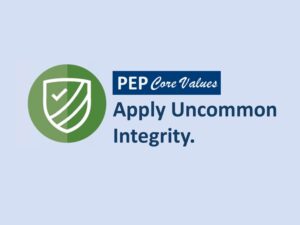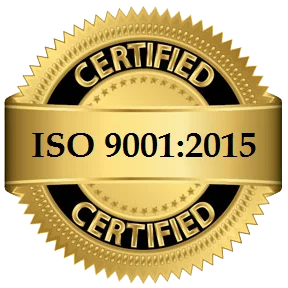
Job stress and worker burnout has been a hot topic for some time, but it reached its tipping point with the convergence of the gig economy, the pandemic, remote work, and the tidal wave of digital tools that has engulfed us. For many, work life is now less regimented, perhaps, but also more fragmented, more solitary, more all-consuming. So, are we really being more productive? Are we satisfied with our jobs? Are we “engaged employees”? Not exactly.
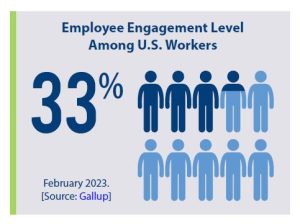
According to Gallup’s quarterly surveys of the U.S. working population, the engagement level for American employees sits at just 33%. It declined for the first time in a decade during the COVID pandemic, dropping four points from 36% in January 2020 to a low of 32% in 2022, rising just one point since then.
Among Federal employees specifically, The Best Places to Work in the Federal Government® rankings showed a 1.1-point drop in employee engagement and satisfaction from 2021 to 2022, following a 4.5-point decrease a year earlier during the first phases of COVID.
What Does It Mean to Be “Engaged” in Our Work?
Organizational behavior professor William A. Kahn explained employee engagement in his 1990 paper (“Psychological Conditions of Personal Engagement and Disengagement at Work”) as “the harnessing of organization members’ selves to their work roles; in engagement, people employ and express themselves physically, cognitively, and emotionally during role performances.”
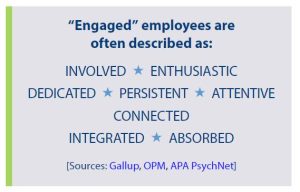
Executive coach and leadership educator John Baldoni wrote in the Harvard Business Review, “While people define engagement in various ways, I prefer a plain and simple definition: People want to come to work, understand their jobs, and know how their work contributes to the success of the organization.” Sandy Sherman, former Deputy Program Manager, Office of Human Capital, at a large federal agency and PEP subject matter expert, believes that “employees are engaged when they feel valued, involved, invested; when they feel that their ideas matter, that they can contribute.”
Why Is Employee Engagement So Important?
As it turns out, employee engagement benefits both the worker and the workplace. The practices and policies that drive engagement create a more positive workplace culture, which increases staff wellbeing and reduces the burnout that seems to be plaguing the workforce. At the same time, higher engagement improves job performance, reduces turnover, and produces positive business outcomes. Win-win.

“Decades of data have confirmed that higher employee engagement, or the strength of the mental and emotional connection an employee feels toward their workplace, has many positive benefits — including reduced stress, improved health and job satisfaction, as well as increased productivity, job retention, and profitability.” – Natalia Peart, PhD, Clinical Psychologist and Executive Leadership Consultant, Harvard Business Review
Increasing Engagement Among Federal Workers
The Federal government has prioritized employment engagement, tracking it with the Office of Personnel Management (OPM) Federal Employee Viewpoint Survey (FEVS) and developing trainings and tools. Based on positive results in previous years, there has been a renewed effort to maximize engagement.
“Agencies should transform the employee performance and engagement culture by identifying, addressing, and remedying any disparities in access or participation, empowering, and encouraging employees to maximize their talent, and enhancing agency performance management programs to motivate, reward, and recognize high performance.” – OPM 2021 Federal Workforce Priorities Report
What – and Who – Drives Employee Engagement?
Employee engagement is activated by the conditions and climate of the workplace, by management practices, and by leadership. Dr. Kahn identified three main factors:
- Meaningfulness: An understanding of the purpose of the work and a company’s mission makes people more likely to approach their job with greater diligence.
- Psychological Safety: A sense of being in a judgment-free work environment makes an employee feel secure enough to express opinions and make constructive suggestions.
- Availability: A person’s physical and mental capacity must meet the demands of a position – i.e., the job requirements should be reasonable and achievable.
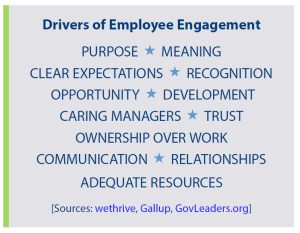
Wages and benefits are noticeably absent from Dr. Kahn’s key requirements. The Power of Federal Employee Engagement stresses that financial incentives are important – but not all-important: “Competitive pay and benefits along with a healthy work-life balance all help to increase employee satisfaction. But, unless employees feel a special bond with the employing organization, they will not be highly engaged and may not put forth the extra effort typically needed to improve organization results.”
Managers Set the Tone
Managers, particularly immediate supervisors, control an employee’s workload, development opportunities, and work environment. Gallup learned that the manager or team leader alone accounts for 70% of the variance in team engagement. The organization also found that “it takes more than a 20% pay raise to lure most employees away from a manager who engages them, and next to nothing to poach most disengaged workers.” PEP SME Sandy Sherman notes, “As managers, we must involve employees, invest in their growth, and ensure that the organization is invested in them in a positive way.”
Best Practices for Managers
Clearly, generous wages and perks aren’t a panacea. More is needed. Additional research and employee engagement models have dissected Dr. Kahn’s three components to identify some specific keys to unlocking an employee’s work ethic.
Gallup’s 12 essential elements of employee engagement:
- I know what is expected of me at work.
- I have the materials and equipment I need to do my work right.
- At work, I have the opportunity to do what I do best every day. ·
- In the last seven days, I have received recognition or praise for doing good work.
- My supervisor, or someone at work, seems to care about me as a person.
- There is someone at work who encourages my development.
- At work, my opinions seem to count.
- The mission or purpose of my organization makes me feel my job is important.
- My associates or fellow employees are committed to doing quality work.
- I have a best friend at work.
- In the last six months, someone at work has talked to me about my progress.
- This last year, I have had opportunities at work to learn and grow.
Tips for bringing the 12 essential elements into your workplace:
- Lead by example: Improve your own work engagement – capitalizing on your strengths, soliciting feedback, and maintaining a healthy work-life balance – to be a positive influence on your direct reports.
- Practice self-accountability: Recognize that your actions and emotions have an impact on others and be willing to adjust your own behavior.
- Support mentoring: Mentor your staff (and encourage it among your employees) to establish relationships, build trust, and promote employee development.
- Encourage two-way communications: Promote regular discussions and questions, provide guidance and feedback – and give recognition.
- Connect employees to the larger unit: Make it clear to individuals how they contribute to the organization’s mission and goals.
- Give employees ownership over their work: Delegate effectively and empower employees to construct their own methods and refine existing ones.
Sandy Sherman, offers some additional and highly effective motivational practices from her federal experience.
Provide development opportunities for early and mid-career employees, such as:
- Working on special high-visibility projects.
- Developing and delivering presentations.
- Attending conferences or enrolling in developmental trainings.
- Traveling to work at other offices.
- Collaborating with other teams.
Acknowledge the experience of late-career workers by requesting that they:
- Record their institutional knowledge and preferred processes as a company reference.
- Serve as mentors to less experienced staff members.
Conclusion
Ultimately, employee engagement is really a rather old-fashioned notion. It’s about getting back to the basics of social interaction: communicating one-on-one; paying attention; being more aware, more generous, more open, more considerate. It’s about disengaging – at least somewhat – from our technomania and engaging with each other. If we can simply remember not to check our humanity at the office door, we may find it easier to add that personal connection to our work life. Engagement with our work and our co-workers will follow.
About the Author: Mary Ellen Polentz has written blogs and numerous informational resources covering human capital and workforce development topics such as youth apprenticeship, marketing and promotion, stakeholder engagement, outreach, and more.
To Learn More about PEP and our experience in Human Capital Services, visit our Services page or contact us. To be the first to receive our next blog post, please join our mailing list. You can download a copy of the PDF here.

